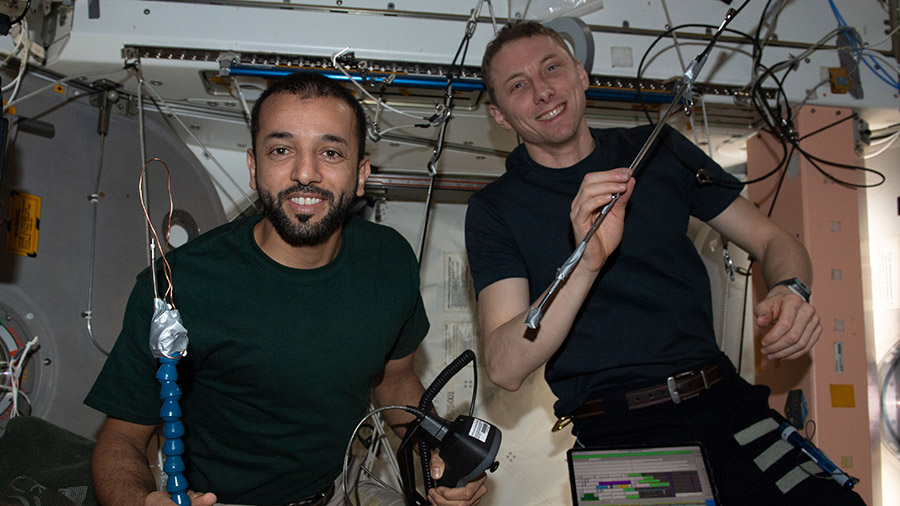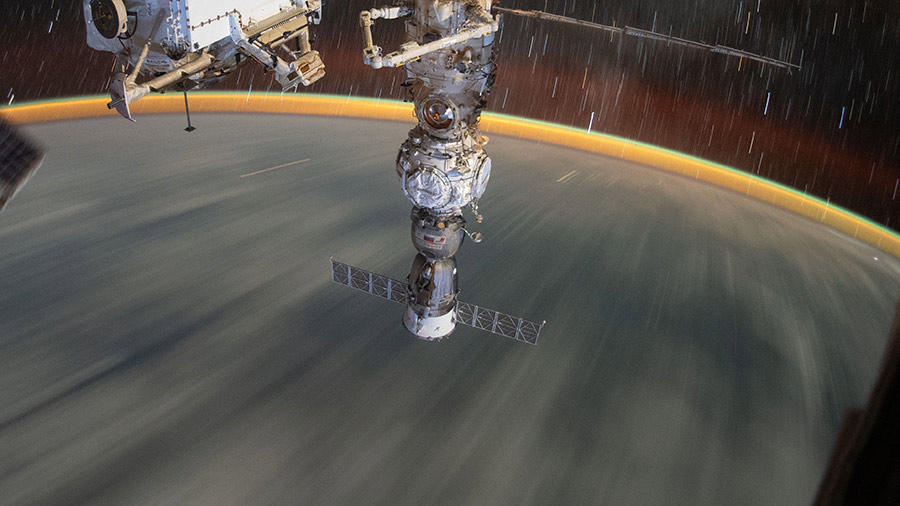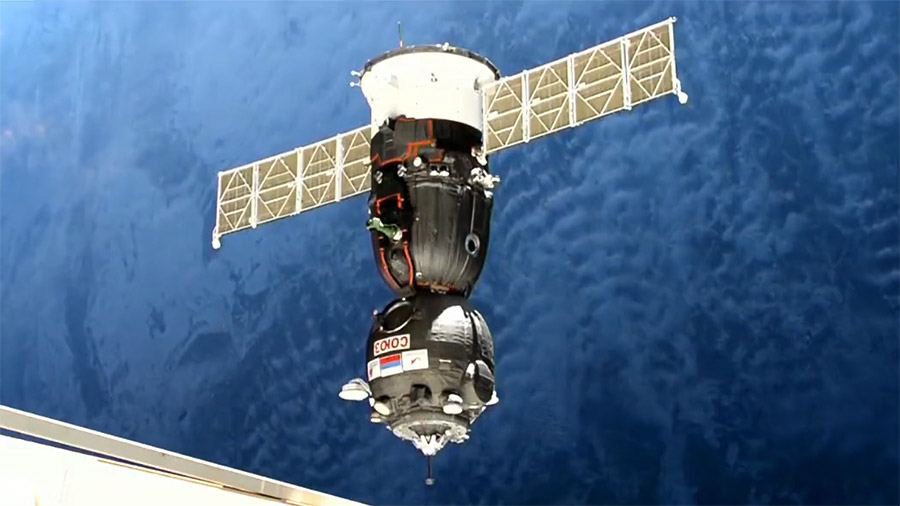
The seven-member Expedition 69 crew began its week studying microgravity’s effects on human immunity, replacing critical life support gear, and cleaning up after last week’s spacewalk. Axiom Space is also counting down to its second private mission to the International Space Station.
The orbital lab’s main purpose is gaining scientific knowledge not possible in Earth’s gravity to gain new insights benefitting humans on and off the Earth. Human research and physics are a key part of the microgravity science program helping NASA and its international partners plan missions to the Moon, Mars, and beyond.
NASA Flight Engineer Stephen Bowen started Monday processing blood samples that will be analyzed to understand how living in space affects cellular immune function to promote healthier astronauts. At the end of the day, Bowen put on a vest and headband packed with sensors that will record his physiological data to the Canadian Space Agency’s Bio-Monitor device.
Station flight engineers Frank Rubio of NASA and Sultan Alneyadi of UAE (United Arab Emirates) worked throughout Monday on experiment hardware supporting advanced space biology research. Rubio worked in the Kibo laboratory module checking out the Confocal Space Microscope that captures fluorescence imagery to observe the fundamental nature of cellular and tissue structures. Alneyadi installed a syringe filled with a protein solution inside the Microgravity Science Glovebox for the Ring Sheared Drop experiment that may provide potential treatments for neuro-degenerative diseases.
Rubio and Alneyadi also assisted NASA Flight Engineer Woody Hoburg as he worked throughout the day on the Destiny laboratory module’s carbon dioxide removal assembly. Hoburg spent several hours throughout Monday replacing components then checking for leaks on the life support device located in Destiny’s air revitalization system rack.
Commander Sergey Prokopyev and Flight Engineer Dmitri Petelin relaxed Saturday and Sunday following their five-hour and 14-minute spacewalk on Friday to deploy and activate a radiator on the Nauka science module. The two cosmonauts then kicked off Monday uninstalling components and checking for leaks on their Orlan spacesuits then returning the Poisk airlock to its post-spacewalk configuration. Afterward, the pair checked the heart monitoring gear they would wear during their descent to Earth inside the Soyuz MS-23 crew ship.
Roscosmos Flight Engineer Andrey Fedyaev spent his day primarily on maintenance activities as he cleaned ventilation equipment and laptop computers in the Zvezda service module. Fedyaev also spent a few moments on human research activities recording and downloading his body mass measurements then collecting his own blood sample for later analyzing.
The second private astronaut mission from Axiom Space, Axiom Mission 2, is scheduled to launch to the space station at 5:37 p.m. EDT on Sunday. Commander Peggy Whitson with Pilot John Shoffner and Mission Specialists Ali Alqarni and Rayyanah Barnawi will ride the SpaceX Dragon spacecraft to the orbiting lab’s space-facing port on the Harmony module where they are scheduled to dock at 9:24 a.m. on Monday. The private quartet will conduct research, outreach, and commercial activities before returning to Earth.
The Axiom Mission 2 Flight Readiness Review was conducted today and has concluded. The media briefing will begin as scheduled at 5 p.m. EDT today. More: https://www.nasa.gov/press-release/nasa-sets-coverage-for-axiom-mission-2-briefings-events-broadcast
Learn more about station activities by following the space station blog, @space_station and @ISS_Research on Twitter, as well as the ISS Facebook and ISS Instagram accounts.
Get weekly video highlights at: https://roundupreads.jsc.nasa.gov/videupdate/
Get the latest from NASA delivered every week. Subscribe here: www.nasa.gov/subscribe




